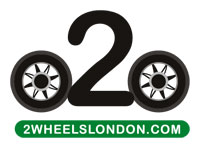Why observation and anticipation are the keys to safe riding
It’s a tragic fact that compared to other road users, motorcyclists are at a disproportionately higher risk of being involved in a crash.
What’s worse, that risk rises even further for novice riders, and it’s usually accepted that this is because they haven’t built up the knowledge and experience they need to identify dangerous situations early enough to avoid them.
Bikers have to know how to spot potential dangers, and anticipate problems before they develop. Without this, you are more likely to be forced into drastic actions that can cause you to lose control of your bike.
So how do you gain the skills you need to keep you safe? The best place to start is by learning from an expert. Once you’ve completed your CBT, improve your skills further by taking guidance from a professional motorcycle trainer. They can teach you how to observe what’s around you and understand how to position your bike on the road.
In addition to your trainer’s guidance, here’s some quick tips on identifying hazards and developing your awareness skills
- Stay alert at all times - don’t let your concentration wander. You’ve got to be on top of your game every time you’re riding. Scan the road to see what is happening – is that van coming out from that side road, will those lights change, is that pedestrian going to cross? Anticipate other road users’ next move.
- Look for potential hazards that car and van drivers tend to ignore. Watch for potholes or debris in the road that may mean you have to ride round them. Spotting problems in your path early gives you time to avoid them in a controlled manner, not in a violent swerve that could see you lose balance or push you into the path of another vehicle.
- What’s the visibility like? We’re not talking about fog and mist here – though they can be an issue – but rather, do you have clear lines of sight? If you are riding in a city like London or Manchester, road sides can be cluttered with lampposts, street signs and advertising A-boards, as well as be teeming with pedestrians. Do you have a clear view of what’s ahead? Are there cars emerging from junctions, or traffic stopped by the roadside? If your view isn’t clear, drop your speed and give yourself more time to respond to dangers.
- Remember, you’re wearing a helmet. It will save your life in a crash, but remember, helmets can limit your peripheral vision, the area you can see at the edge of your vision. To make sure you have a full view of the road, consciously turn your head frequently to examine everything around you.
- Keep an eye on other vehicles. Try to anticipate what cars and vans around you are going to do next. If a vehicle ahead is blocking the right-hand lane as he waits to make a turn, will following vehicles nip across to your inside lane to go round him? If so, have they seen you?
Watch the road ahead for other road users’ signals.
- Weather matters. Whether it’s strong winds that could affect your balance, wet roads that make skidding more likely and increase stopping distances, or bright sun that hits visibility, the weather we ride in plays a big part in keeping us safe. They all create different hazards so be mindful of the conditions at all times. If unsure, it’s always safest to dial down the throttle and take your time.
To recap:
Look. What potential hazards can you see?
Anticipate. What can you not see?
Plan. How can you prepare yourself and your bike?
Remember, good observation of what’s going on around you keeps you safe. Other road users will make mistakes: it’s your job to make sure that when they do, you’re in a good place to avoid them.
It’s no good knowing you were in the right when you’re on your way to hospital – or worse.
